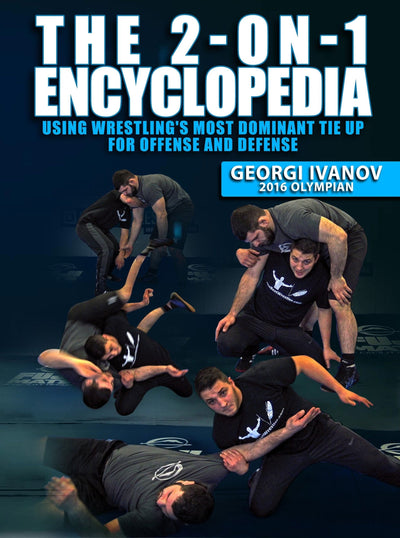An Overview of Wrestling Styles
Wrestling, a sport celebrated for its physicality, technique, and rich history, encompasses various styles that captivate audiences worldwide. From ancient traditions to modern adaptations, wrestling styles have evolved, each with its unique rules, techniques, and cultural significance. Here, we delve into the diverse landscape of wrestling, exploring different styles, renowned wrestlers, and the essence of their distinct forms.
Gain the best wrestling knowledge and skill at FanaticWrestling.com!
The diverse world of wrestling, spanning various styles like freestyle, Greco-Roman, folkstyle, and professional wrestling, shares common elements that define the sport. Within professional wrestling, terminology such as "heel" refers to a character portraying a villainous or antagonistic role, often inciting negative reactions from the audience. In competitive wrestling, terms like "repechage" denote a second chance for wrestlers who've lost to advance to later rounds through a special bracket. "Over" in wrestling signifies a performer's popularity or connection with the audience. "Technical superiority" refers to a win by a margin of points that showcase a wrestler's technical prowess and dominance over their opponent. Injuries are a part of the sport, and an "ACL" injury, affecting the anterior cruciate ligament, can be a significant setback for a wrestler, often requiring surgery and rehabilitation to regain full strength and return to competition. These terms and concepts, though varying in their application across different types of wrestling, contribute to the unique lexicon and dynamics within the world of this dynamic sport.
Styles of Wrestling
Competitive Wrestling Styles:
- Freestyle Wrestling: Emphasizes throws, takedowns, and ground-based techniques. Wrestlers can use both their arms and legs to attack and defend.
- Greco-Roman Wrestling: Restricts wrestlers from using leg attacks, focusing solely on upper body throws and holds.
- Folkstyle Wrestling: Primarily practiced in the United States, characterized by controlling an opponent on the mat, focusing on rides, escapes, and takedowns.
Professional Wrestling Styles:
- Lucha Libre: Originating in Mexico, known for high-flying acrobatics, rapid sequences, and theatrical storytelling.
- Strong Style: Popular in Japan, combines elements of martial arts and stiff strikes, emphasizing realism and physicality.
- Sports Entertainment/Western Pro Wrestling: Prominent in the United States, incorporates scripted storylines, character development, and dramatic performances.
Famous Wrestlers Across Styles
- Freestyle Wrestling: Features legendary wrestlers like Aleksandr Karelin (Russia), Jordan Burroughs (USA), and Saori Yoshida (Japan).
- Greco-Roman Wrestling: Boasts iconic figures such as Hamza Yerlikaya (Turkey), Alexander Karelin (Russia), and Rulon Gardner (USA).
- Folkstyle Wrestling: Showcases stars like Cael Sanderson, Dan Gable, and Kyle Dake, celebrated for their collegiate achievements.
- Lucha Libre: Spotlights luminaries like El Santo, Blue Demon, and Rey Mysterio, known for their high-flying maneuvers and colorful masks.
- Strong Style: Includes revered wrestlers like Antonio Inoki, Mitsuharu Misawa, and Shinsuke Nakamura, renowned for their hard-hitting and realistic approach.
- Sports Entertainment/Western Pro Wrestling: Encompasses iconic figures like Hulk Hogan, "Stone Cold" Steve Austin, The Rock, and Ric Flair, pivotal in shaping the entertainment aspect of professional wrestling.
The Debate: Which is the Best Wrestling Style?
The subjective nature of determining the "best" wrestling style often hinges on individual preferences, cultural context, and the criteria used for evaluation. Freestyle wrestling's widespread global participation, Greco-Roman's emphasis on upper-body technique, and folkstyle's collegiate prominence in the United States showcase diverse strengths. Similarly, pro wrestling styles vary in entertainment value, technical prowess, and storytelling. Ultimately, the "best" style is subjective, contingent on one's appreciation for technique, entertainment, or cultural significance.
Gain the best wrestling knowledge and skill at FanaticWrestling.com!
In conclusion, the world of wrestling presents a tapestry of styles, each with its unique attributes and revered practitioners. The variety in techniques, cultural influences, and entertainment value across different wrestling styles underscores the sport's multifaceted nature, offering something special for every wrestling enthusiast to admire and appreciate.
Did you find the blog helpful? If so, consider checking out other guides:
- Enhancing Your Wrestling Game with Brazilian Jiu-Jitsu (BJJ)
- The Crucial Role of Muscles in Wrestling
- Tracing the Global Roots of Wrestling Through History
- A Chronicle of Pro Wrestling's Rich History and Enduring Popularity
- Exploring Ancient Roman Wrestling
- New Japan Pro Wrestling's Stardom and Schedule
- Unveiling the Storied History of Georgian Wrestling
- Exploring the Origins and Uniqueness of Folkstyle Wrestling
- Unveiling the Birth and Rise of AEW Wrestling
- Bodyweight Wrestling Workouts
- Unlocking the Wrestling Body
- The Path to Pro Wrestling Shape
- Arm Wrestler Workouts for Maximum Strength
- The Power of Resistance Band Workouts
- Wrestling Upper Body Workouts for Peak Performance











